DILUTED LEMON JUICE
I'm sure this is going to annoy some people, mainly all the people who said not to try this- but I had to find out what this actually did for myself. Here are two Denarii that I bought from ebay for $2.49 each. Both coins are chipped, and both coins had encrustations, one more so than the other. I believe the one is a Limes.
I made a mixture of roughly 10:1 Distilled water:Lemon Juice, and let the coins soak for a week. I pulled them out today and started to work with them- and was simply amazed on how well this worked out.
The green encrustations come off with ease. The little pockets of dirt just slide off. The red and orange encrustations are giving me some difficulties, but they are somewhat soft and workable.
Here are the before scans, taken from the listing on ebay:
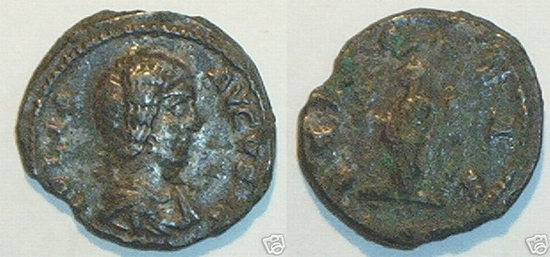
On the above coin, even though the scan doesn't show it well, there were encrustations on the face, back of the neck, covering STA, and some between 11 and 12 o'clock on the obverse. On the reverse, the encrustation could be found on the figure, especially the lower body, below the line of ground, the sceptre, and pretty much all along the legend.
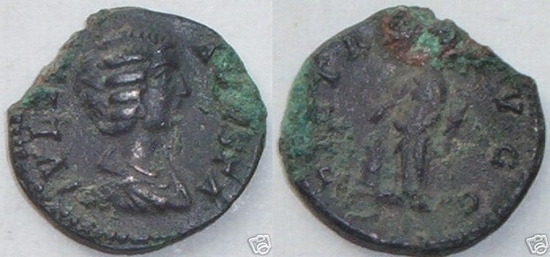
On this coin, there are alot more encrustations. You can see much of it in the scan, but there is probably that much more that really isn't visible.
I'll add the after scans as soon as I get my new scanner working.
And after scans. Finally got the new scanner working. I spent about 30 minutes on both coins, combined. I used my Swiss diamond dipped pin, the silver brush, and finally the 3M radial brush.
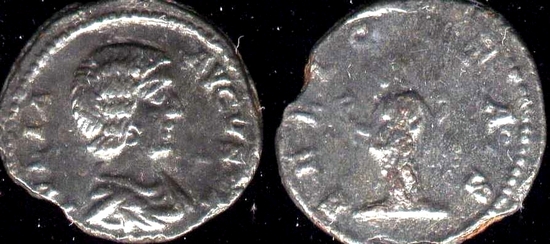
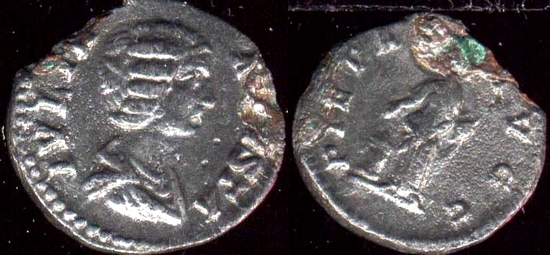
Quite a difference!
Here's another coin, it was quite encrusted, more so than the scan even shows. I have it attributed as an Ant- but I think that might be incorrect. It's much thicker than the Gallienvs Ants I have come across, it's black like silver, even in the chip. I let it soak for a week in the same solution. The dirt and encrustation easily came off with very little effort. I had it soaking in distilled water and washing soda for 3 months or so, working on it occasionally with little effect. THIS WORKS!
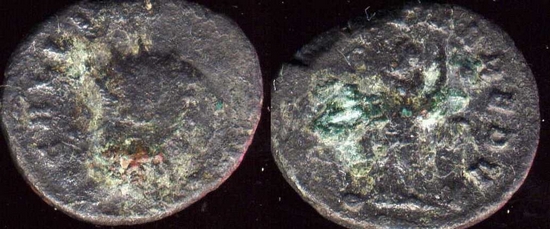

Removing the encrustations revealed bare metal, which was expected. It's not as red as the scan shows, I haven't figured out why so many of my scans have come out so reddish- I need to adjust the red scale I guess.
I also did three other coins, which I inadvertently erased the image of the before condition. The fouree came out well, the silvered larger coin, with the Vics, came out decently. It was in a cull lot of British coins. It was rough, had blue and green encrstations, and covered in dirt. The encrustations came off very easily, but the dirt was much more difficult. But the smaller silvered coin didn't come out well. The encrustations came off easily, but the silvering came off as well. The silvering was rough to begin with; it was hard to tell any details of the coin. It was the type of silvering that I usually remove because of the lack of details. I'm not sure if it was because the silvering was in such poor shape to begin with, or the lemon juice. I will still use this procedure, and I'll find another silvered AE3 to try this with, hopefully one that's rough, and one that's good.
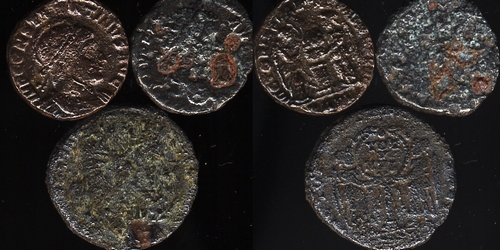
The coin in the top right corner was quite hideous, especially the reverse. I had tried everything except electrolysis on it- and I mean everything, with no effect- until lemon juice. The top left coin lost its silvering, but it's not pitted or such, and quite a nice coin in hand- even though it's bare metal. The bottom coin is the English cull- the reverse is still nice, the obverse is pretty rough. You can see some of the dirt remaining, it just won't come off- I've used picks, brushes and even the 3M, it just refuses to give. On the other coins that I've tried lemon juice on, the dirt pretty much slid off with ease.
EXPERIMENT III
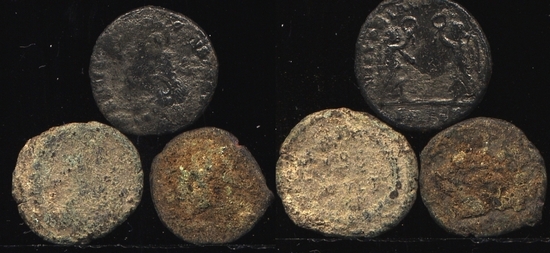
Three experiments in one. 1/16/06
The top coin has "bad" silvering. The obverse is nearly fully silvered, and I can't read more than a couple letters, the reverse is about 35% silvered and isn't too bad. I would try to remove the silvering on this anyways. The bottom left coin is just dirty, and is a later bronze VOT coin. The bottom right is a small bronze coin that is encrusted. I'll let them soak for a week or so, and see what happens. Initially, they weigh 4.1 grams, dry (they haven't been soaked or such before-hand).
1/23/06
Coins weigh 4.2 g, so they gained 0.1g water weight. It looks like one should not use lemon juice on bronze coins. The silvering came off of the top coin, but so did much of the patina. I can't tell much with the VOT coin- it looks like I lost the green that was showing through. Not much change in appearance with the encrusted coin.
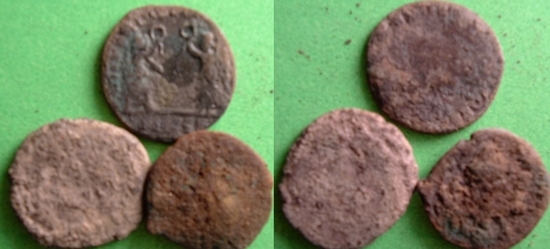
And after a couple minutes with the Swiss pin (per coin) and a silver brushing:

The Vics is pretty much totally stripped (though readable), the VOT is porous/ugly and most of the patina came off, the encrusted coin ended up being a Salvs Reip. Most of the encrustation came off without any effort at all... and I mean none. I spent less time on the encrusted coin than either of the others. It just wiped off. There is still some encrustation on the coin, since most of the patina has already come off (if it had patina to begin with) I'm just throwing it back in.
In the future:
Don't use on soiled bronze coins.
Don't use on bronze coins with patina.
Check coins more often.
Seems to work decently on encrustation.
1/26
The small Theodosius has soaked for another 3 days. I spent perhaps a minute on it with my Swiss pin, then hit it with the silver brush. It came out relatively decently, and has a not-unpleasant brown finish to it now. It's darker than the photo.
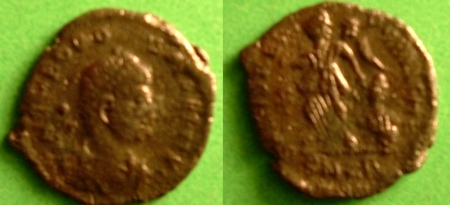
1/26/05
EXPERIMENT IV
Here are two coins that I just received as super duper premiums, or what not. I wasn't very happy with them, and will stick with normal grades I think. The encrustations on the one coin cover perhaps 70% of the coin, and are moderately thick in places. The coin on the right has light encrustations covering perhaps 90% of the coin. I'm going to try to remember to check these coins every day, and update as I go.

After 12 hours, some minimal softening of the encrustations. Bare metal showing in places on the Licinius.
1/27
After roughly 21 hours, the Licinius is showing alot more bare metal.The encrustations are somewhat softer, and I was able to remove some with the Swiss pin and a toothbrushing. Throwing them back in.The patina on the Vot coin is still intact, but the mass on the bust hasn't softened much.

1/29

More bare metal showing on the Licinius. Another day or so, it should be entirely clean. Most of the encrustations have been removed, and there is some stubborn dirt remaining.
The Vot coin is coming along slowly. Quite a bit of encrustations have been removed, but the encrustation on the bust still hasn't softened much.
1/30
I only pulled the Vot coin out today. I toothbrushed, did a little grinding on the bust, and silver brushed it. The reverse seems to be about 30% silvered- this was not noticable yesterday. A bit more encrustation has been removed, but it still hasn't turned into the soft mush that wipes away.

2/1
I have done a little work on the coins with the pick, silver brushed them, and also hit the Licinius with my 6 micron wheel, to get a better look at what I was dealing with (it looked about the same as the 1/29 update before the 6 micron wheel). It's about clean. The Vot coin is starting to soften up- but this bright orange/red encrustation is tough. After the silver brushing, it returns to a brownish color, but when working on it- it is bright orange/red. Reverse looks about 50% silvered now.

2/3/06
A bit more has been removed from the Vot coin. It's not softening like the other trials- I'm going to add a couple drops of lemon juice to the solution. The other coin I am calling done- I don't think that there is anything else to remove. I'll have to repatina it.

2/06
More has been removed, but I have also lost the silvering. The encrustation on the bust is starting to soften up- maybe a few more days will do it.
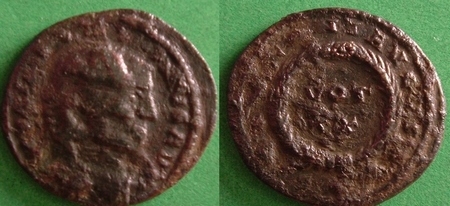
2/10

Not much change, the red encrustation is a little softer. For some reason, the 2/6 photo came out darker (see the background) even though the camera settings were the same. *sigh*
I'm going to let this go for a week or so, before pulling it out again.
2/20
The red encrustation is starting to soften finally. Here's the coin after a little scraping and a silver brushing:
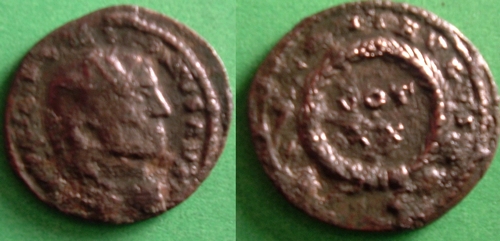
3/03
I give up, lemon juice doesn't seem like it's ever going to eat the rest of the encrustation off. Here's the coin after a silver brushing:
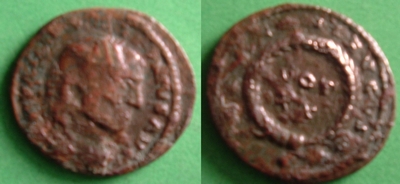
A lot has been removed from the beginning, but it seems that the lemon juice just isn't effective on bronze coins that have this red encrustation.
It worked wonders on those fouree's though, and worked so-so on some of the bronzes, even if patina was lost eventually. The trick would be to soften the encrustation, and pull it at the right time. Greenish encrustations might dissolve fast enough so patina isn't lost, but don't even try it with the orangish red encrustation.